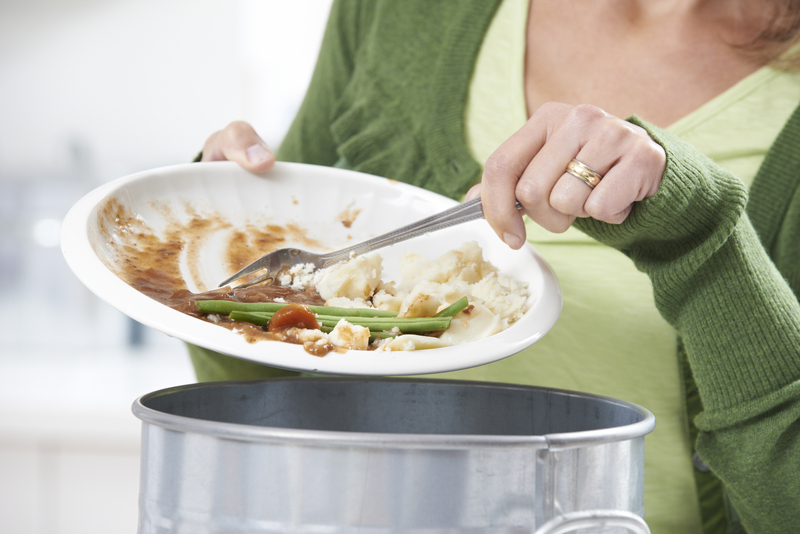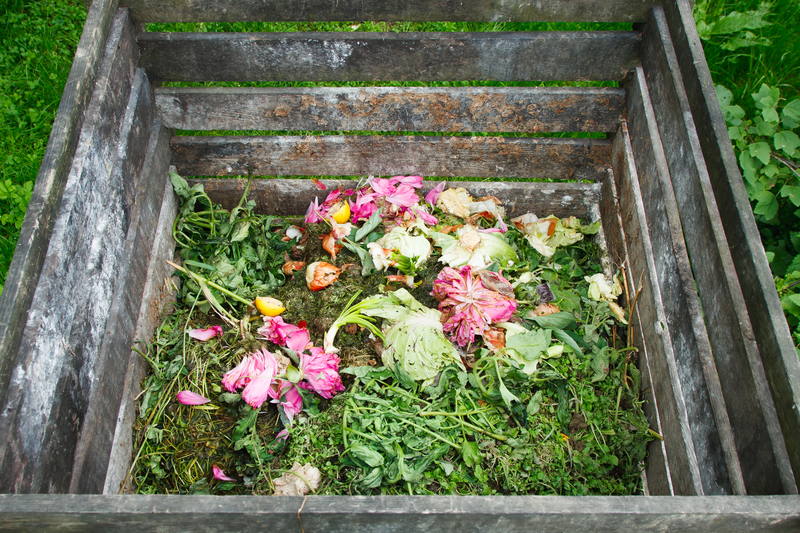The Ultimate Guide to Disposing and Recycling Cookware
Are you wondering what to do with old or damaged pots, pans, or bakeware? This ultimate guide provides a comprehensive, practical, and environmentally responsible overview of disposing and recycling cookware. From cast iron to non-stick pans, we'll show you all the options--so your kitchen upgrade doesn't add to landfill waste. Read on to learn how to recycle cookware responsibly and sustainably!
Why Proper Cookware Disposal and Recycling Matters
Many homeowners routinely replace worn-out cookware. Non-stick surfaces lose their coating, stainless steel pans warp, handles fall off, or you simply upgrade. While tossing these kitchen items in the trash may be convenient, improper disposal of cookware has a significant environmental impact. Scrapped metal, coatings, and plastic handles can take centuries to decompose, leaching chemicals into soil and water. By recycling cookware or disposing of it properly, you conserve resources, reduce waste, and support a healthier planet.
Environmental Benefits of Recycling Cookware
- Reduces landfill overflow
- Recovers high-grade metals for reuse
- Decreases mining and manufacturing pollution
Challenges in Cookware Disposal
- Cookware often consists of mixed materials (metals, plastic, coatings)
- Not all recycling centers accept household items
- Non-stick coatings may contain harmful substances

Understanding Different Types of Cookware Materials
Before you begin, identify what material your cookware is made of. Some materials are highly recyclable, while others require special consideration:
- Stainless Steel: Durable and easy to recycle
- Cast Iron: Extremely recyclable, can often be restored or donated
- Aluminum: Valued by scrap collectors, highly recyclable
- Non-stick (Teflon or PTFE-coated): Challenging to recycle due to coating
- Copper: Sought after by scrap dealers
- Ceramic and Glass: Usually not accepted in curbside recycling
- Bakeware with Plastic or Silicone Handles: Must be separated for metal recycling
Options for Disposing and Recycling Old Cookware
Here are the main methods to safely dispose of or recycle cookware:
1. Donate Usable Cookware
Is your cookware still functional? If so, the best way to extend its life is to donate it. Many organizations welcome gently used pans, pots, and bakeware:
- Charity Thrift Stores (Goodwill, Salvation Army, local charities)
- Shelters and community centers
- Online platforms (Freecycle, Facebook Marketplace, Craigslist's "free" section)
Tip: Be upfront about cosmetic flaws. A scratched pan may still be useful to someone in need.
2. Upcycling and Repurposing Cookware
Many cookware items can be creatively upcycled or reused:
- Use old saucepans as planters or garden buckets
- Repurpose cast iron pans as serving trays or rustic home decor
- Turn muffin tins or baking sheets into crafty organizers
- Old lids become quirky wall art or kitchen clocks
Upcycling cookware gives it a second life and keeps it out of the waste stream!
3. Recycling Cookware Through Scrap Metal Yards
Scrap metal yards are an excellent option for most metal cookware. These facilities accept:
- Stainless steel pans
- Aluminum cookware
- Copper pots and pans (sometimes at a premium price)
- Cast iron items
Before you recycle:
- Remove non-metal parts (plastic handles, knobs, or silicone grips)
- Check local rules--some yards require lids and handles to be removed
- Clean off heavy food residues or grease
Pro Tip: Call ahead and ask if your local scrap metal recycler accepts cookware, and inquire about their requirements for drop-off.
4. Curbside Recycling Programs
Most household curbside recycling programs do NOT accept cookware, even if metal, due to shape and potential damage to sorting equipment. However, some municipalities may host special collection events. Contact your local public works or recycling center for guidance.
5. Manufacturer Take-Back and Recycling Programs
Some leading cookware manufacturers offer recycling or trade-in programs to encourage sustainability:
- Calphalon has run take-back programs for non-stick pans in the past
- GreenPan and similar brands sometimes offer recycling for customers
- Mail-in recycling services like TerraCycle will process cookware for a fee
Visit the manufacturer's website or contact customer service to find out whether these options are currently available.
6. Community Recycling Events
Many towns periodically host household goods recycling events that accept metal cookware, small appliances, and more. Check your city's or county's waste management schedule for free or low-cost collection days.
7. Disposal as Waste (Last Resort)
If no other options are feasible, non-recyclable materials (such as ceramic or heavily coated non-stick pans) may need to go in the trash. Always ask your waste hauler how to safely dispose of cookware to avoid landfill hazards.
How to Prepare Cookware for Recycling
- Clean thoroughly: Remove food, grease, and residues to avoid contamination of recycling streams.
- Disassemble: Remove plastic, rubber, or wooden handles and knobs. Recycle or dispose of these separately.
- Sort materials: Separate metal, glass, or ceramic parts if possible for proper recycling.
- Check for hazardous materials: If your pan has a Teflon (PTFE) coating, inquire whether the recycler has the capability or protocol for safe handling.
Types of Cookware and the Best Disposal Methods
Stainless Steel and Aluminum Cookware
- Best for: Recycling at scrap yards
- High value as scrap metal
- Remove all non-metal components
Cast Iron Cookware
- Highly durable and infinitely recyclable
- Consider restoration and donation first
- Fully metal--no disassembly needed
Non-Stick Pans
- Complicated to recycle due to coatings like Teflon
- Some scrap yards accept if coating is worn off
- Look for manufacturer take-back or specialist recycling programs
Copper Cookware
- Highly sought after by scrap metal buyers, sometimes at higher prices than steel or aluminum
- Remove plastic or wooden handles
Ceramic, Glass, and Stoneware
- Not accepted with regular recycling due to composition and melting point differences
- Repurpose creatively (planters, storage), or dispose of through household trash per municipal guidelines
Frequently Asked Questions about Cookware Disposal and Recycling
Can I put old pots and pans in my recycling bin?
No, most curbside programs do not accept cookware. The shape and material can jam machinery or contaminate recycling streams. Local recycling events or scrap metal yards are better choices.
How do I get rid of old Teflon pans?
Most recyclers will not accept Teflon-coated pans due to potential chemical hazards. Seek out specialized programs (such as TerraCycle), manufacturer take-back, or, as a last resort, ask municipal waste if it is safe for landfill disposal.
Do cookware handles need to be removed before recycling?
Yes, whenever possible. Remove all non-metal parts--plastic, rubber, wood--as they contaminate scrap metal recycling. Recycle or dispose of handles separately based on material.
Are rusty pans recyclable?
Yes! Scrap yards will accept rusty cast iron, steel, or aluminum pans, as they're melted down during the recycling process regardless of surface condition.
How can I be sure my cookware is accepted at a recycling facility?
Always call ahead or check the facility's website for accepted items, restrictions, and preparation requirements. This avoids wasted trips and ensures your items are processed correctly.

Tips for Buying Sustainable Cookware
As part of a zero-waste kitchen, consider eco-friendly cookware choices for the future. Here's how to make environmentally responsible purchases:
- Choose durable materials like cast iron or stainless steel, which last a lifetime and can be recycled
- Look for products with minimal coatings or plastics
- Buy from manufacturers offering recycling initiatives
- Purchase second-hand or vintage cookware
Summary: Your Roadmap to Responsible Cookware Disposal and Recycling
- Donate or repurpose usable cookware first
- Recycle metal pots and pans at scrap metal facilities
- Use community recycling events for hard-to-recycle items
- Properly prepare cookware by cleaning and disassembling
- Avoid sending cookware to landfill whenever possible
By following this guide, you'll minimize your environmental footprint and make the most of your old cookware. Every pan kept out of landfill is another step toward a sustainable kitchen and a cleaner planet. Happy recycling!
